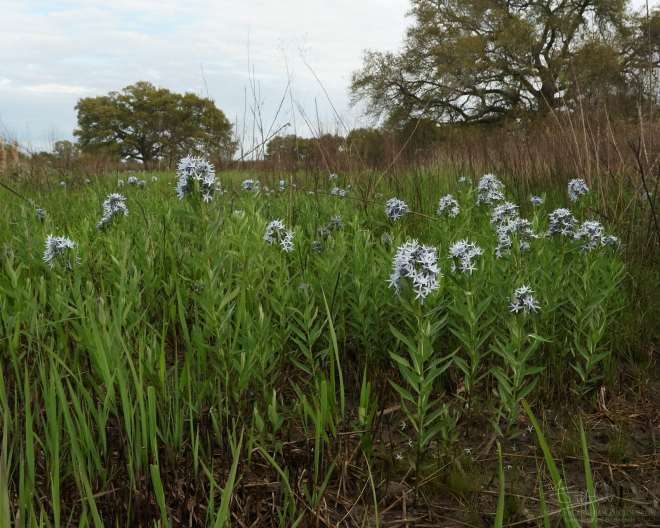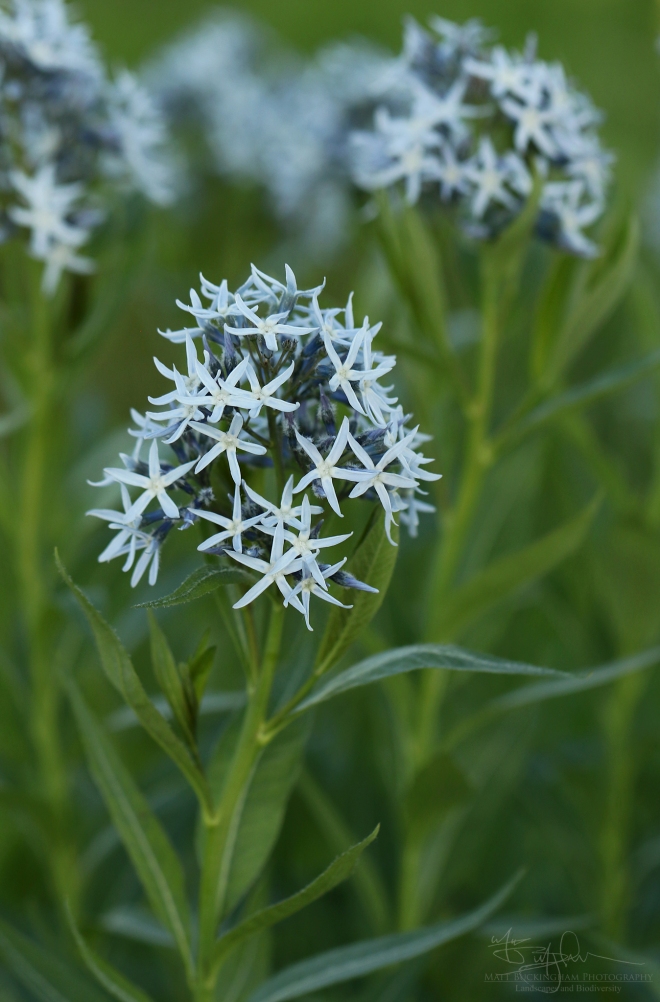Target Species: Creeping Bluestar (Amsonia repens)

Amsonia repens in a remnant coastal prairie
Admittedly, I didn’t know much about Amsonia repens when I put it on my 2017 list of biodiversity goals. I knew that it was an showy wildflower that was endemic to the West Gulf Coastal Plain. This alone piqued my interest and prompted me to make it a target species.
What I found, however, was a general lack of information on the species. I struggled to find a good reference with information on how to differentiate it from the very similar A. tabernaemontana. I was able to track down some historic locations, however not feeling comfortable in my ability to identify it, I failed to pursue it with much enthusiasm. I stopped at a couple of sites in 2017 where a friend had reported some a few years prior but found nothing. After that, the species went on the back burner while I pursued other more easily researched species on the list.
What drew me to the Creeping Bluestar was its range, which is almost entirely confined to the eastern third of Texas. I have always had a strong interest in species endemic to the West Gulf Coastal Plain, which includes East Texas, western Louisiana, and extreme southeastern Oklahoma and southwestern Arkansas. There are a number of species that are restricted in range to this area, and this distributional pattern has long fascinated me.

County level distribution for Amsonia repens
My interest in pursuing Amsonia repens was renewed after I photographed some Amsonia plants in bloom in remnant prairie and marsh patches in Fort Bend and Brazos County this spring. I tried once again to do some research and came across a paper that was published in March of 2019: Taxonomy of the Amsonia tabernaemontana complex (Apocynaceae:Rauvolfioidae) by J K Williams from Sam Houston State. Though this paper proposes that A. repens be considered a variety of A. tabernaemontana, it provides the best treatment I have seen on differentiating A. repens from other similarly structured congeners.
In a nutshell, A. repens (or A. tabernaemontana var. repens) is best differentiated from A. tabenaemontana by having tomentose (hairy) calyces, a feature which can be seen in the image below.

Amsonia repens
Interestingly, after reading this paper and reviewing other taxonomic keys, I went back to examine some photos of Amsonia that I took in Montgomery County a few years ago and found that they too were A. repens. It had been hiding under my nose this whole time!
